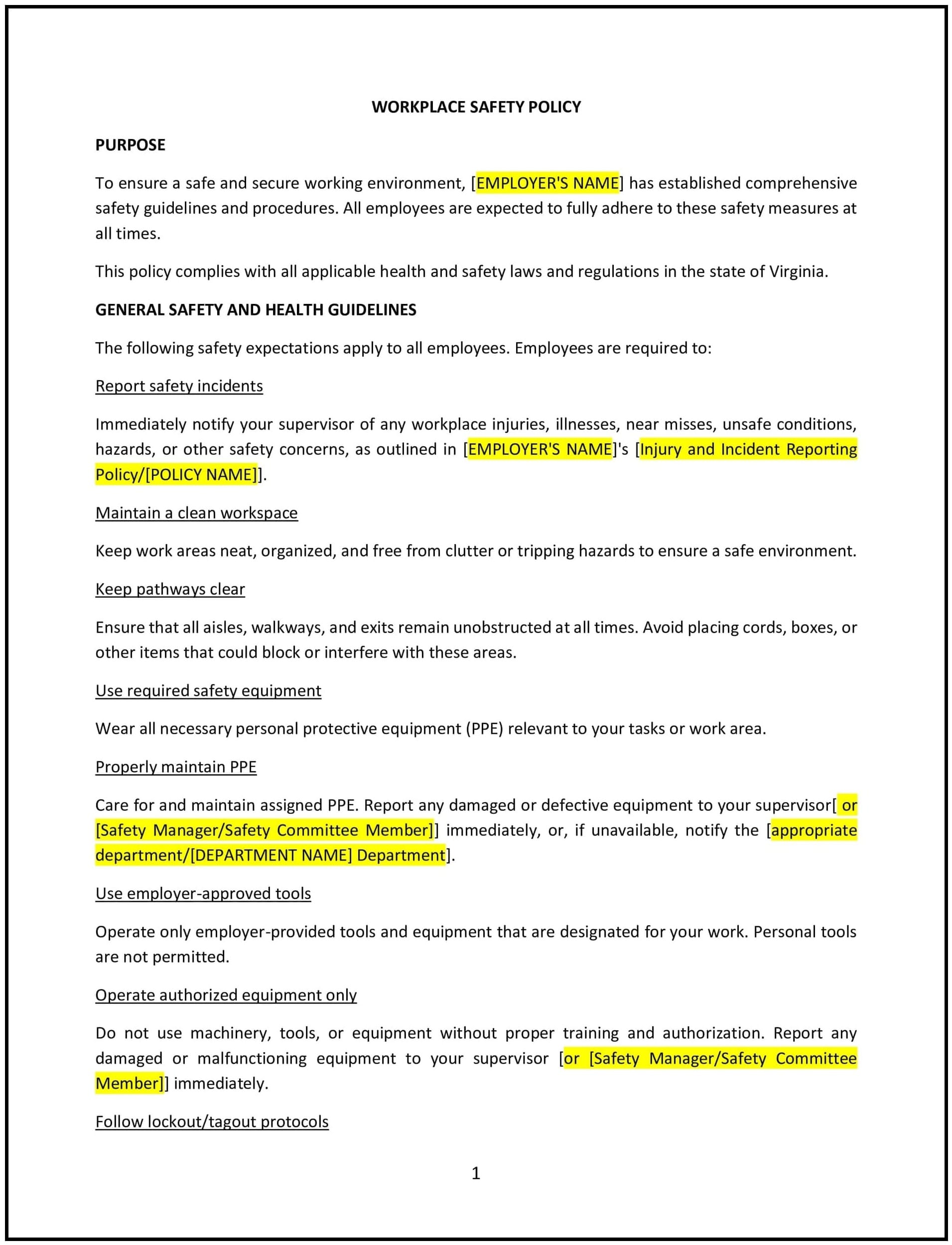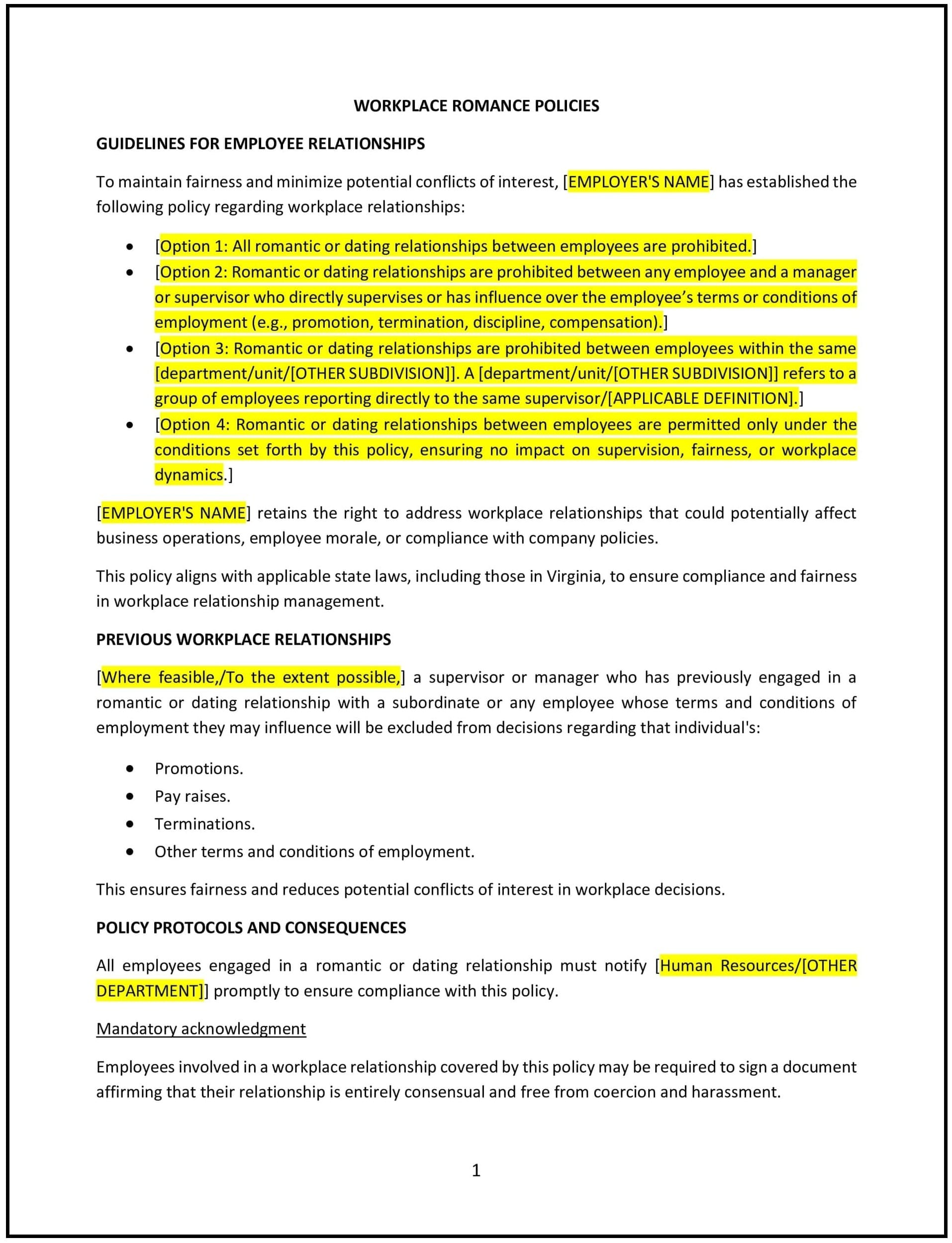Moonlighting policy (South Dakota): Free template

Moonlighting policy (South Dakota)
This moonlighting policy is designed to help South Dakota businesses establish guidelines for employees who work secondary jobs or engage in outside employment. It outlines procedures for disclosure, conflicts of interest, and performance expectations.
By adopting this policy, businesses can ensure transparency, protect their interests, and align with general best practices for outside employment.
How to use this moonlighting policy (South Dakota)
- Define moonlighting: Explain what constitutes moonlighting, such as secondary jobs, freelance work, or consulting.
- Establish disclosure requirements: Specify steps for employees to disclose outside employment, including forms and timelines.
- Address conflicts of interest: Provide examples of prohibited activities, such as working for competitors or using company resources for outside work.
- Set performance expectations: Outline how outside employment should not interfere with the employee’s primary job responsibilities.
- Train employees: Educate staff on the policy and their responsibilities regarding outside employment.
- Monitor compliance: Regularly review disclosures and address any conflicts of interest.
- Review and update: Assess the policy annually to ensure it aligns with evolving business needs and employment trends.
Benefits of using this moonlighting policy (South Dakota)
This policy offers several advantages for South Dakota businesses:
- Ensures transparency: Demonstrates a commitment to open communication about outside employment.
- Protects business interests: Helps prevent conflicts of interest and misuse of company resources.
- Enhances productivity: Ensures employees prioritize their primary job responsibilities.
- Builds trust: Shows employees that the business values transparency and fairness.
- Supports compliance: Aligns with best practices for managing outside employment.
Tips for using this moonlighting policy (South Dakota)
- Communicate the policy: Share the policy with employees and include it in the employee handbook.
- Provide training: Educate staff on the importance of transparency and avoiding conflicts of interest.
- Monitor compliance: Regularly review disclosures and address any conflicts of interest.
- Address issues promptly: Take corrective action if outside employment violates the policy or harms the business.
- Update regularly: Assess the policy annually to ensure it aligns with evolving business needs and employment trends.
Q: How does this policy benefit businesses?
A: By managing moonlighting, businesses can ensure transparency, protect their interests, and enhance productivity.
Q: What constitutes a conflict of interest?
A: Examples include working for competitors, using company resources for outside work, or neglecting primary job responsibilities.
Q: Can employees work for competitors?
A: No, working for competitors is typically prohibited under this policy to protect business interests.
Q: How should businesses handle undisclosed moonlighting?
A: Businesses should address undisclosed moonlighting promptly, which may include disciplinary action or policy reminders.
Q: How often should businesses review this policy?
A: Businesses should review the policy annually or as needed to ensure it aligns with evolving business needs.
This article contains general legal information and does not contain legal advice. Cobrief is not a law firm or a substitute for an attorney or law firm. The law is complex and changes often. For legal advice, please ask a lawyer.


